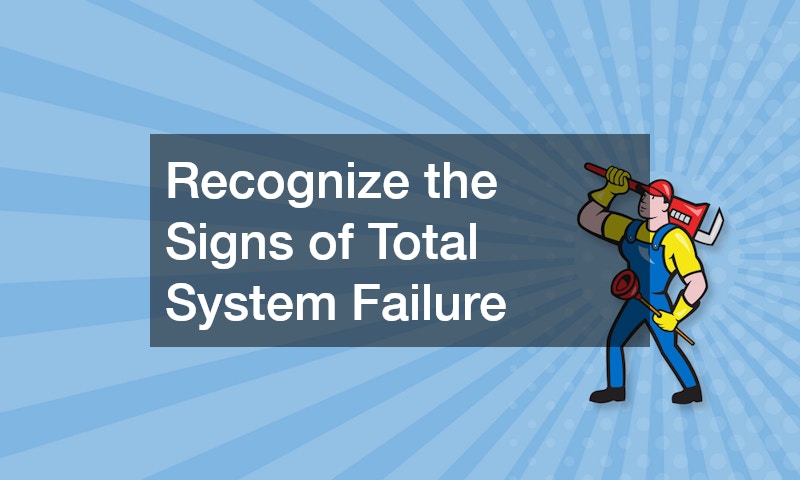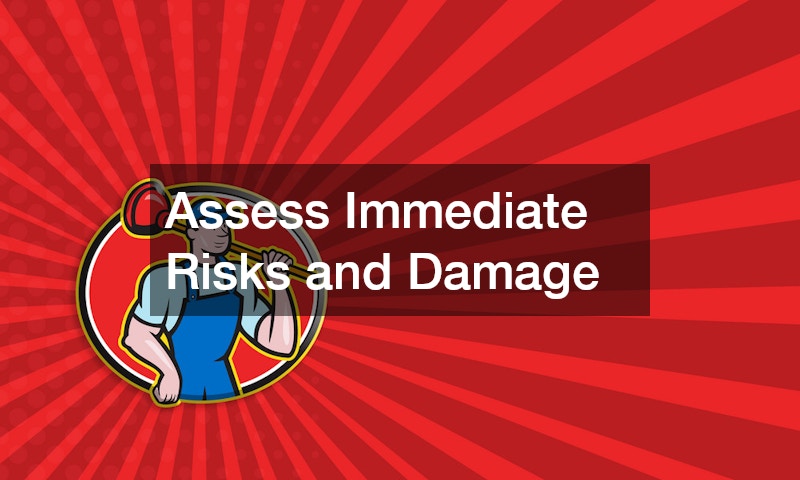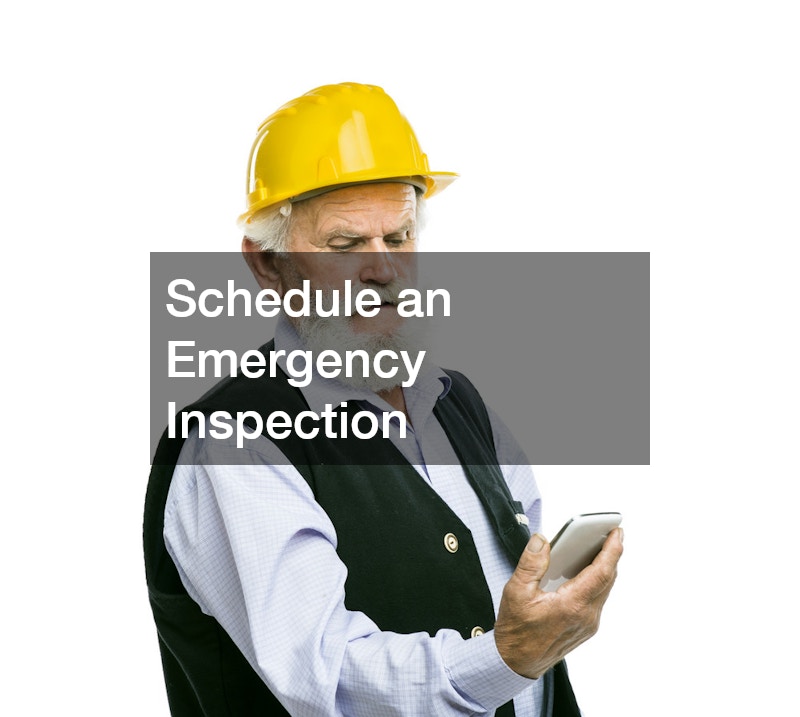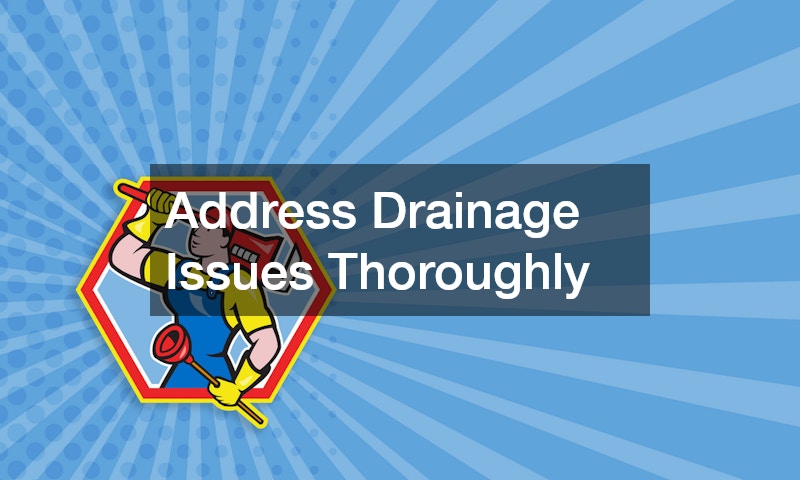What to Do if Your Home Experiences a Total Plumbing Failure
There’s no warning more stressful for a homeowner than the sudden realization that your entire plumbing system has stopped functioning. Whether you’ve woken up to a flooded basement, no running water, or sewage backing up into your sinks, a total plumbing failure is more than just an inconvenience—it’s a full-scale emergency. Unlike isolated leaks or clogged drains, a system-wide failure means that your pipes, fixtures, or water source are critically compromised.
When facing a complete plumbing shutdown, it’s easy to feel overwhelmed. However, quick thinking and the right steps can minimize damage, reduce repair costs, and get your home back to normal faster. From shutting off your water supply to calling professionals and coordinating repairs, knowing how to respond is crucial. This guide walks you through what to do immediately, how to diagnose the issue, and what long-term steps to take following a plumbing failure.
Recognize the Signs of Total System Failure
A complete plumbing failure often begins with a few warning signs that escalate quickly. You might notice a sudden drop in water pressure, gurgling noises from the drains, discolored tap water, or a foul odor coming from your sinks or toilets. Sometimes, the first indication is a burst pipe that sends water flooding into your home. In other cases, you may lose access to hot water entirely or discover multiple drains backing up at once.
It’s important not to ignore these signs or assume they’ll go away on their own. While some symptoms can mimic minor issues, when they occur together or affect multiple parts of your plumbing system, they point to something more serious. At the first hint of widespread trouble, prepare to take immediate action to prevent further damage to your home and belongings.
Shut Off the Water Supply Immediately
When dealing with a major plumbing failure, your top priority should be limiting the spread of water damage. The moment you suspect a serious problem, locate your home’s main water shut-off valve and turn it off. This valve is typically found near the perimeter of your home, in a basement, crawl space, or utility room.
By shutting off the water at the source, you prevent additional water from flowing through damaged pipes, which can help reduce flooding and structural damage. If the issue is related to your water heater or a specific appliance, isolate the valve for that appliance if possible. However, in a true failure scenario, it’s safer to stop water flow to the entire house.
Once the water is off, open your faucets to drain any remaining water from the lines. This will relieve pressure in the pipes and help reduce the risk of additional ruptures or leaks.
Assess Immediate Risks and Damage
After the water supply is off, take stock of what areas have been affected and determine whether there are safety risks. If flooding has reached electrical outlets or appliances, leave the area immediately and avoid contact with water. In these cases, it’s essential to turn off the electricity to the affected areas or call an electrician to do so safely.
Check for visible water pooling, wet drywall, ceiling damage, and signs of mold. If water has been standing for an extended period, bacteria and other harmful contaminants may be present. In addition to physical hazards, total plumbing failures can also affect water quality. If you notice a strong odor or discoloration in your water, do not drink or bathe in it until it has been tested or confirmed safe.
Once the immediate risks are mitigated, it’s time to begin drying out affected areas using towels, fans, or wet vacs while waiting for professional help.
Contact a Professional Plumbing Company
Once the initial crisis has been contained, your next step should be to contact a licensed professional. Working with a local plumbing company ensures that trained technicians arrive quickly and understand the region’s infrastructure and common plumbing challenges.
Don’t delay this step. A total plumbing failure can be caused by a wide range of issues—from collapsed pipes and corroded lines to a failed water main or burst sewer pipe. These are not DIY situations. Trained professionals have the tools and diagnostic equipment to locate the source of the problem accurately and recommend appropriate repair options.
If your regular plumber is unavailable, look for companies that offer 24/7 emergency plumbing services. Time is of the essence, and waiting too long could lead to more damage, higher costs, and unsafe conditions.
Schedule an Emergency Inspection
After placing the call, request an emergency inspection to evaluate the extent of the plumbing failure. A qualified technician will conduct a detailed inspection of your system, including water lines, sewer pipes, drains, and your water heater if applicable. This inspection should also include camera scoping of underground pipes if a sewer backup is suspected.
Depending on the severity of the issue, the plumber may need to shut down additional systems, reroute plumbing temporarily, or perform immediate drain cleaning services to prevent further damage. In some cases, they may refer you to specialists or additional services, such as emergency drain cleaning, if the issue stems from a deep or stubborn blockage.
The key is to be thorough. Ask for a complete diagnostic report and an explanation of both the root cause and the proposed repair strategy. Understanding the full scope will help you make informed decisions as you move forward.
Begin the Pipe and Fixture Repairs
Once the problem has been diagnosed, your plumber will begin the process of restoring functionality to your home. In the case of a pipe rupture, pipe repair services will be necessary to replace damaged sections and reinforce any surrounding weak points. This may require cutting into walls or floors, which could extend the repair timeline depending on how widespread the damage is.
If the issue is related to a specific appliance or fixture—like a leaking toilet or faulty water line to your fridge—those repairs will be handled individually. Often, a water heater failure contributes to a larger plumbing breakdown, especially in older systems. If the unit is beyond repair, you’ll need to coordinate with professionals who handle water heater repairs or replacements.
Some situations may require upgrading outdated pipes or installing new valves and fittings. While these repairs can be costly, investing in quality materials now can help prevent future failures and ensure your plumbing system meets current building codes.
Address Drainage Issues Thoroughly
In many plumbing failure scenarios, blocked or collapsed drains play a major role. If multiple drains are backing up or slow to empty, your system may need full-scale cleaning or even excavation. Drain cleaning companies specialize in removing buildup caused by grease, sediment, tree roots, and mineral deposits that accumulate over time.
Depending on the extent of the damage, you may also need to work with a drain installation company to replace or reline old drain lines. This is especially common in homes with aging infrastructure or those built in areas with shifting soil that causes pipes to crack or collapse.
Ignoring drain issues can lead to chronic problems that put stress on your entire system. By handling them now, you protect your home from future backups and improve overall water flow and waste removal.
Don’t Overlook the Water Supply Source
In rural areas or properties not connected to a municipal water line, a plumbing failure may originate with your well. If this is the case, contact a qualified water well service provider to assess the pump, pressure tank, and filtration systems. A malfunctioning well can cut off your water entirely or cause intermittent pressure and contamination.
Sometimes, a well issue is misdiagnosed as an internal plumbing failure, so it’s important to rule this out early. Your water well service technician can test the quality of the water, inspect for bacteria, and confirm whether the pump is operating correctly. If your property uses both well and municipal systems, the problem may lie in the switch valve or pressure regulator, which will also need inspection.
While this might be less common, overlooking your water source can prolong downtime and lead to inaccurate repairs. Always confirm that the water supply is working properly before moving on to internal fixes.
Upgrade Your System for Long-Term Stability
Once the immediate crisis is under control, consider whether your plumbing system could benefit from upgrades. Total plumbing failures are often the result of outdated infrastructure, corroded pipes, or poorly maintained systems. If your home still uses galvanized steel or polybutylene pipes, it may be time to consider repiping.
Installing updated pipes, pressure-regulated valves, and high-efficiency fixtures can reduce the likelihood of future issues. You might also want to invest in water softeners if hard water has contributed to buildup in your pipes or appliances. Over time, mineral-rich water can damage plumbing components and reduce the life of your water heater and dishwasher.
Speak with your plumber about options that make sense for your home and budget. A small investment in preventative upgrades now can save you from thousands in emergency repairs down the line.
File an Insurance Claim if Applicable
Depending on your homeowner’s insurance policy, certain types of plumbing failure may be covered. Coverage varies widely, so it’s important to review your policy and contact your insurer as soon as possible. If flooding or structural damage occurred, document everything with photos and video before cleanup begins.
Most insurance policies do not cover damage due to neglect or long-term wear and tear, but sudden and accidental failures—like a burst pipe or sudden water heater rupture—may be eligible for reimbursement. Keep records of all work performed, including invoices from the plumber, materials purchased, and any cleaning or restoration services used.
If you’re not sure what your policy covers, a licensed insurance adjuster or public claims advocate can help you understand your rights and navigate the claims process more effectively.
Prepare for Future Emergencies
After surviving a plumbing failure, you’ll want to take steps to be better prepared next time. This starts with creating an emergency plan for your household. Make sure every family member knows where the shut-off valves are and how to use them. Post emergency numbers in an accessible spot and keep a basic tool kit nearby in case you need to act quickly.
You might also consider installing leak detectors and smart water monitoring systems that alert you to unusual usage patterns. These systems can help detect problems early and shut off water automatically to prevent major damage.
Finally, schedule annual inspections and drain maintenance with your local plumbing company. Regular attention from trained professionals can help you spot trouble before it spirals into a full-blown crisis.
A total plumbing failure can turn your home into a disaster zone within minutes—but knowing how to respond can make all the difference. From shutting off the water and calling a trusted plumbing service to repairing pipes, managing drainage, and inspecting water sources, each step plays a vital role in protecting your home and restoring comfort.
No homeowner ever wants to face the chaos of a complete system breakdown, but with the help of experienced professionals—whether it’s a drain installation company, water well service, or someone skilled in water heater repairs—you can get through it with minimal stress. Don’t wait for a crisis to start thinking about your plumbing system. Stay proactive, stay informed, and treat your home’s water infrastructure with the attention it deserves.
If you’ve experienced a plumbing failure before, you know how important it is to have reliable contacts for plumbing services, emergency drain cleaning, pipe repair services, and drain cleaning companies. The right team can mean the difference between days of downtime and a fast return to normal. Be sure to reach out to a professional team if your home is experiencing severe plumbing issues. They can help you determine the issue and provide solutions that last for the long haul. We hope this guide was able to help you feel more confident when you’re facing plumbing issues. These issues can be very dangerous, so don’t hesitate to reach out to the experts when you need support.




